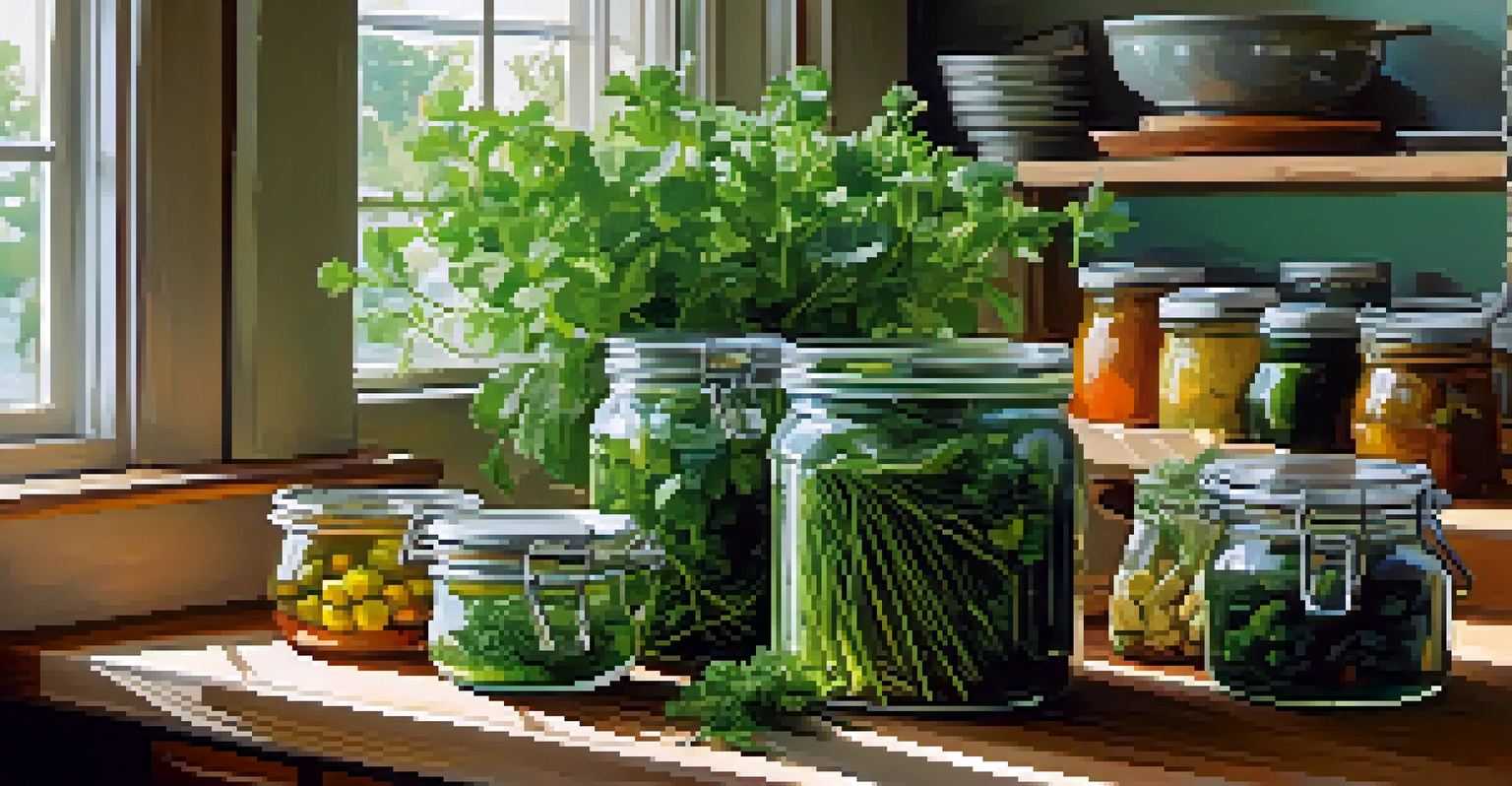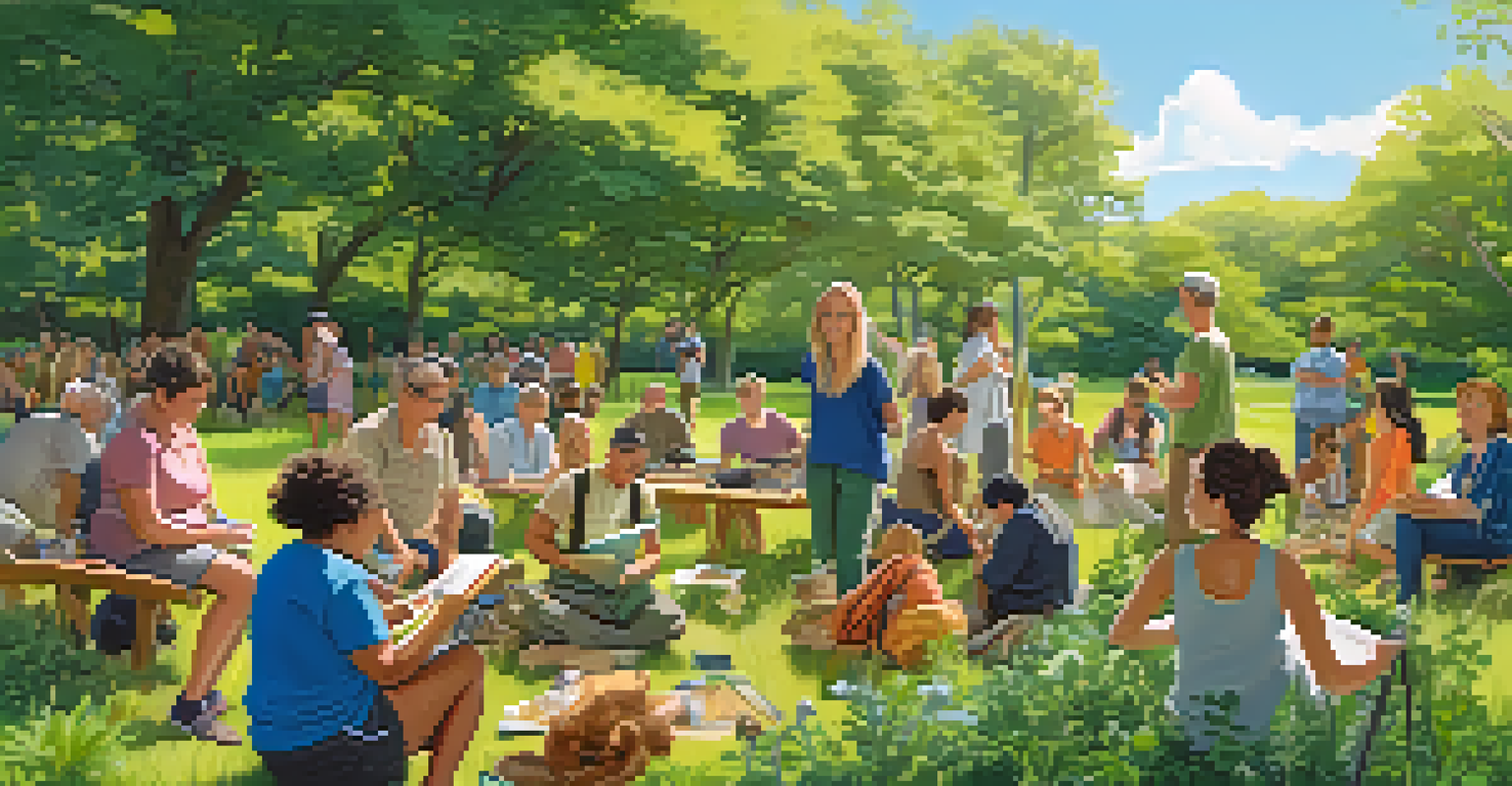Understanding Ethical Foraging: A Beginner's Guide to Plants

What is Ethical Foraging and Why Does It Matter?
Ethical foraging refers to the practice of gathering wild plants in a way that is sustainable and respectful to the environment. It’s more than just picking berries; it’s about understanding the ecosystem and ensuring that your actions do not harm it. This practice is crucial as it helps preserve biodiversity while allowing us to enjoy nature's bounty.
The greatest threat to our planet is the belief that someone else will save it.
By foraging ethically, you can enjoy the thrill of discovering wild edibles while also promoting the health of local plant populations. Many foragers believe that respecting nature's limits is essential to maintaining a balance in the ecosystem. When you take only what you need and leave enough for wildlife and to sustain future growth, you contribute positively to the environment.
Moreover, ethical foraging encourages a deeper connection with nature. It can be an enriching experience, fostering mindfulness and appreciation for the natural world. As you learn about different plants and their roles in the ecosystem, you develop a sense of responsibility towards preserving them.
Essential Principles of Ethical Foraging
The first principle of ethical foraging is to know your limits. Only forage for plants you can confidently identify, as some edible plants have poisonous look-alikes. If you're unsure, it’s best to err on the side of caution and leave them be. This not only keeps you safe but also ensures that you don't inadvertently harm a plant population.

Another important principle is the 'rule of thirds.' When foraging, aim to only take one-third of what's available in any given area. This practice allows the remaining plants to continue growing and reproducing, ensuring future foraging opportunities. It’s a simple guideline that helps maintain ecological balance.
Practice Sustainable Foraging
Ethical foraging emphasizes gathering wild plants in a way that preserves biodiversity and respects the ecosystem.
Lastly, always consider your surroundings and potential impacts. Foraging in sensitive areas, like nature reserves, can disrupt fragile ecosystems. Being aware of local regulations and respecting them is vital, as it protects both the plants and the environment.
The Benefits of Foraging for Wild Plants
Foraging provides a unique opportunity to connect with nature and discover new flavors. Many wild plants are more nutrient-dense than their cultivated counterparts and can add exciting variety to your meals. Imagine seasoning your dish with fresh wild herbs or adding foraged greens to your salad—it's a delightful way to explore gastronomy!
Foraging is an act of respect and reciprocity to the land that provides us with nourishment.
Additionally, foraging can be a cost-effective way to supplement your diet. With a little knowledge and effort, you can find a wealth of free, nutritious food right in your local environment. This not only saves money but also encourages a sustainable lifestyle, reducing reliance on store-bought produce.
Socially, foraging can serve as a wonderful bonding activity. Whether you’re exploring the woods with friends or attending a community foraging workshop, it's a great way to meet like-minded individuals. Sharing tips and experiences can create a sense of community and foster a shared commitment to ethical practices.
Identifying Common Edible Plants
One of the best ways to start foraging is by getting familiar with common edible plants. Examples include dandelions, wild garlic, and nettles, all of which are abundant in many regions. Dandelions, for instance, are completely edible, from their leaves to their roots, and they offer a range of culinary uses.
Wild garlic, identifiable by its distinct smell, is another great beginner-friendly plant. It can be used in salads, soups, or as a seasoning, making it a versatile addition to your meals. Learning to identify these plants not only boosts your confidence but also enhances your foraging experiences.
Connect with Nature and Community
Foraging enriches your relationship with nature and provides opportunities to bond with others who share the same passion.
As you gain experience, consider investing in a field guide or a foraging app. These resources can provide valuable information on plant identification, edibility, and seasonal availability. The more you learn, the more enjoyable and rewarding your foraging adventures will become.
Safety First: Foraging Guidelines
When foraging, safety should always be your top priority. Start by foraging in areas that are free from pesticides and pollutants. Urban areas can often be contaminated, so opting for remote or unpolluted locations is best. This ensures that the plants you gather are safe for consumption.
Always wash foraged plants thoroughly to remove any dirt or contaminants. Even if you’ve picked them from a clean area, a good wash is crucial to prevent any potential health risks. Remember, just because a plant is edible doesn’t mean it’s free from hidden dangers.
Lastly, keep an eye on the weather and environmental conditions. Some plants can be affected by extreme weather or disease, which may alter their edibility. Staying informed about your local ecosystem will help you make safer choices while foraging.
How to Preserve Foraged Plants
After a successful foraging trip, you might wonder how to make the most of your haul. Preserving your finds can extend their shelf life and allow you to enjoy them long after the season has passed. Techniques such as drying, freezing, and pickling are all excellent methods to consider.
For example, drying herbs like mint or thyme can create flavorful additions to soups and stews throughout the year. Simply hang them upside down in a cool, dark place until fully dried, and store them in airtight containers. This way, you can enjoy the taste of your foraged plants even in the off-season.
Prioritize Safety and Knowledge
Ensuring safety while foraging involves identifying edible plants, avoiding contaminated areas, and staying informed about local ecosystems.
Pickling is another fun way to preserve your bounty. You can pickle wild garlic scapes or dandelion buds to create zesty additions to salads or charcuterie boards. The process is straightforward, and the result is both delicious and rewarding.
Joining the Foraging Community
As you delve into the world of foraging, consider connecting with others who share your passion. There are numerous online forums, social media groups, and local clubs dedicated to foraging enthusiasts. Joining these communities can provide a wealth of knowledge, ranging from plant identification tips to sharing personal experiences.
Local workshops and foraging tours are also great ways to meet fellow foragers and learn from experienced guides. These events often cover essential topics, such as ethical foraging practices, safety tips, and cooking demonstrations. Plus, they provide a fun opportunity to explore new areas together and discover local plants.

Remember, foraging is as much about community as it is about gathering food. Sharing your experiences and learning from others can enhance your understanding and appreciation of this rewarding practice. So, get out there, meet new people, and enjoy the journey together!